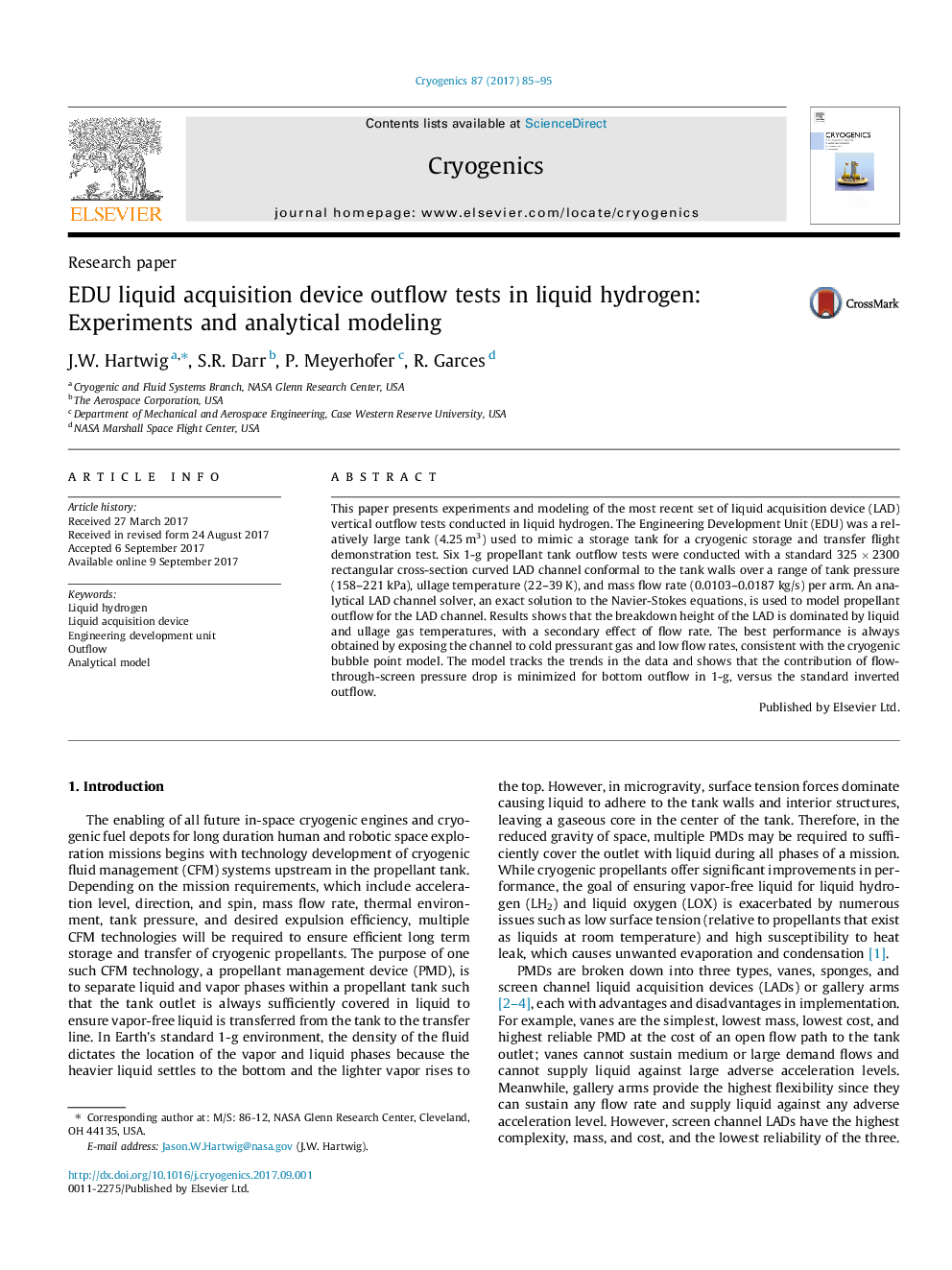| Article ID | Journal | Published Year | Pages | File Type |
|---|---|---|---|---|
| 5444111 | Cryogenics | 2017 | 11 Pages |
Abstract
This paper presents experiments and modeling of the most recent set of liquid acquisition device (LAD) vertical outflow tests conducted in liquid hydrogen. The Engineering Development Unit (EDU) was a relatively large tank (4.25Â m3) used to mimic a storage tank for a cryogenic storage and transfer flight demonstration test. Six 1-g propellant tank outflow tests were conducted with a standard 325Â ÃÂ 2300 rectangular cross-section curved LAD channel conformal to the tank walls over a range of tank pressure (158-221Â kPa), ullage temperature (22-39Â K), and mass flow rate (0.0103-0.0187Â kg/s) per arm. An analytical LAD channel solver, an exact solution to the Navier-Stokes equations, is used to model propellant outflow for the LAD channel. Results shows that the breakdown height of the LAD is dominated by liquid and ullage gas temperatures, with a secondary effect of flow rate. The best performance is always obtained by exposing the channel to cold pressurant gas and low flow rates, consistent with the cryogenic bubble point model. The model tracks the trends in the data and shows that the contribution of flow-through-screen pressure drop is minimized for bottom outflow in 1-g, versus the standard inverted outflow.
Related Topics
Physical Sciences and Engineering
Materials Science
Electronic, Optical and Magnetic Materials
Authors
J.W. Hartwig, S.R. Darr, P. Meyerhofer, R. Garces,
